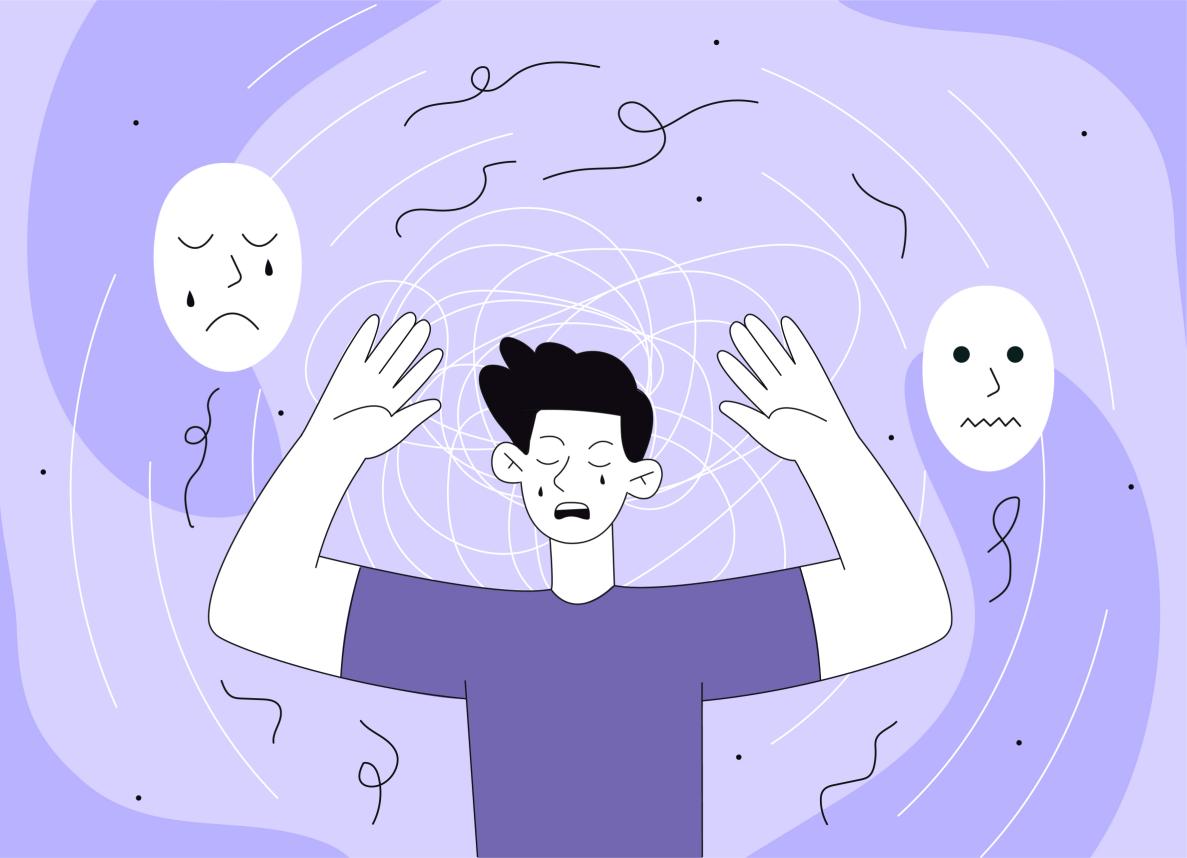
Introduction
Anxiety is a natural emotional response to perceived threats, marked by worry, hyperarousal, and physiological changes that help individuals cope with stress. When transient and proportionate to the situation, anxiety is adaptive and does not interfere with daily functioning. However, when fear or worry becomes persistent, excessive, and out of proportion to actual danger—disrupting an individual’s social, occupational, or personal life—it constitutes a clinical anxiety disorder. Conditions such as generalized anxiety disorder (GAD), panic disorder, and social anxiety disorder reflect dysregulated emotional processing and present with diverse cognitive, behavioral, and somatic symptoms. While occasional anxiety is nearly universal, anxiety disorders are among the most prevalent and disabling psychiatric conditions globally, often requiring medical and psychological intervention.1,2
The global burden of anxiety disorders is substantial, affecting over 300 million individuals as of 2019. Incidence has risen steadily over the past three decades, with a sharp increase during the COVID-19 pandemic3,4. According to the World Health Organization, anxiety and depression rates surged by 25% globally in 2020 alone, driven by widespread uncertainty, social isolation, economic disruption, and bereavement5. These disorders disproportionately affect females and younger populations, particularly adolescents and young adults aged 10–24, where incidence rates have climbed more than 50% since 1990.6
Clinical Features and Impact
Anxiety disorders present with excessive, persistent worry or fear that interferes significantly with daily life. The clinical manifestations vary across subtypes but often include cognitive symptoms (e.g., intrusive thoughts, anticipatory worry), behavioral symptoms (e.g., avoidance), and physiological symptoms (e.g., palpitations, muscle tension, gastrointestinal discomfort).
For instance, GAD is typified by chronic, uncontrollable worry accompanied by restlessness, fatigue, irritability, and sleep disturbances. Panic disorder involves recurrent, unexpected panic attacks—sudden episodes of intense fear with symptoms such as chest tightness, shortness of breath, and dizziness—often followed by concern over future attacks. Social anxiety disorder is characterized by intense fear of social or performance situations due to fear of embarrassment or negative evaluation.7,8
These disorders often emerge during childhood or adolescence and are more prevalent in females. Comorbidity is common, particularly with depression and substance use disorders. Physical complaints, such as gastrointestinal distress or chronic headaches, are frequent and can lead to repeated medical consultations. When untreated, anxiety disorders tend to follow a chronic course and are associated with significant reductions in quality of life, educational and occupational performance, and overall functioning.9
Biological Underpinnings
The pathophysiology of anxiety disorders involves a multifaceted interaction of genetic, neurochemical, and neuroanatomical factors. Genetic predisposition contributes significantly, with polymorphisms in genes regulating serotonin and GABA pathways linked to increased susceptibility.
Neurotransmitter dysregulation plays a central role. Reduced inhibitory GABAergic activity and altered serotonin and norepinephrine signaling are associated with heightened arousal and fear responses. Neuroimaging studies consistently implicate key brain structures: the amygdala (central to fear processing), hippocampus (involved in memory and stress regulation), and prefrontal cortex (responsible for executive control and emotion regulation) show functional and structural alterations in anxiety disorders.10
Additionally, dysregulation of the hypothalamic-pituitary-adrenal (HPA) axis results in abnormal cortisol secretion and an exaggerated stress response. These biological disturbances, in interaction with environmental stressors and early-life adversity, contribute to the onset and maintenance of anxiety disorders.Recent research also points to emerging contributors to anxiety pathology, including low-grade neuroinflammation and disruptions in gut-brain signaling. Moreover, digital interventions—such as app-based CBT and AI-assisted diagnostics—are being explored as scalable tools to improve access and individualize care.11,12
Diagnosis and Challenges
Diagnosing anxiety disorders relies on clinical evaluation, as no biomarker or imaging modality currently provides a definitive diagnosis. Clinicians use DSM-5 criteria to assess symptom type, duration, and impact on functioning. Screening tools such as the GAD-7, Hamilton Anxiety Rating Scale (HAM-A), Beck Anxiety Inventory (BAI), and disorder-specific instruments like the Social Phobia Inventory (SPIN) support structured assessment.
A comprehensive medical and psychiatric history is essential to rule out secondary causes, such as thyroid dysfunction or stimulant use. However, diagnosis is often complicated by symptom overlap with other psychiatric disorders, especially depression, and by the somatic presentation of anxiety. Many patients report physical symptoms—such as palpitations, fatigue, or gastrointestinal complaints—that may obscure the psychological origin. Moreover, the fluctuating and sometimes subtle nature of anxiety symptoms can delay recognition, particularly in primary care settings.13
Effective diagnosis requires careful consideration of symptom patterns, duration (typically ≥6 months for GAD), and the degree of functional impairment. Misdiagnosis or underrecognition may lead to prolonged suffering and increased risk for chronicity and comorbid disorders.14
Reference:
American Psychological Association. Anxiety. https://www.apa.org/topics/anxiety
World Health Organization. Anxiety disorders fact sheet. https://www.who.int/news-room/fact-sheets/detail/anxiety-disorders
Global, regional and national burden of anxiety disorders from 1990 to 2019. PMC, 2021.
Trends in the epidemiology of anxiety disorders from 1990 to 2021, ScienceDirect, 2025.
WHO Scientific Brief: COVID-19 pandemic triggers 25% increase in anxiety and depression worldwide, 2022.
Rising global burden of anxiety disorders among adolescents and young adults, PMC, 2024.
Bandelow B, Michaelis S. Anxiety Disorders: A Review. Dialogues Clin Neurosci. 2022 Dec;24(4):355-364. [PMID: 36573969]
Stein MB, Stein DJ. Anxiety Disorders. Lancet. 2023 Apr 22;401(10372):1130-1144. [PMID: 36747026]
Mishra S et al. A Comprehensive Review of the Generalized Anxiety Disorder. Cureus. 2023 Sep 28;15(9):e46142. [PMCID: PMC10612137]
Stein MB, Stein DJ. Anxiety Disorders. Lancet. 2023;401(10372):1130-1144. [PMID: 36747026]
Bandelow B, Michaelis S. Anxiety Disorders: A Review. Dialogues Clin Neurosci. 2022;24(4):355-364. [PMID: 36573969]
Purves KL et al. Genetic Variants Associated With Anxiety and Stress-Related Disorders. JAMA Psychiatry. 2019;76(9):924-932. [PMID: 31142840]
MedCentral. General Anxiety Disorder: Clinical Challenges and Treatment Strategies. 2022.
American Academy of Family Physicians. Diagnosis and Management of Generalized Anxiety Disorder. 2015.







Post comments